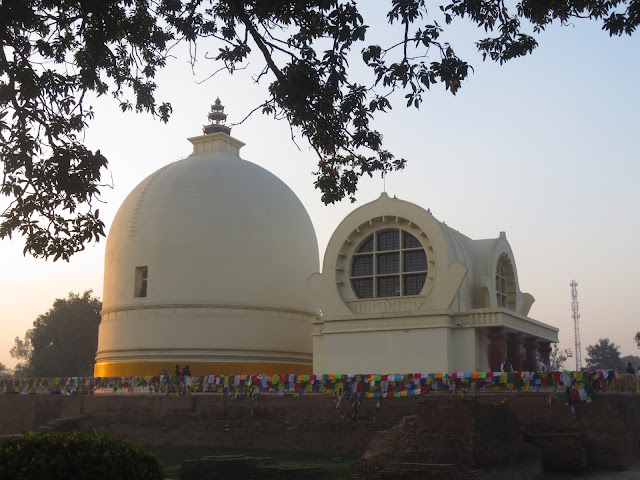From my diary (November 2012)
During the week spanning 12–18 November, there are no classes at the University
as it is the mid-semester break, moved a couple
of weeks so as to include the Hindu festival of Deepavali and the Muslim
festival of Awal Muharram (all the main Islamic, Chinese, Hindu, Buddhist and
Christian festivals are celebrated in Malaysia). Therefore, tagging on the
previous week’s Friday when I have no classes to teach, I have a good ten days
at my disposal to set out on a trip. This time, I wish to take advantage of the
break to start exploring a part of this continent I have never been to before:
South Asia. More precisely, Sri Lanka.
Friday morning at 11, my flight takes
off for Colombo. Less than three and a half hours later, having flown over the
green island, we land at what in 2012 is still the only international airport
in the country, 30 kilometres north of the capital. I’m in South Asia at last! In
a nation that is patently less poor than India, a little less densely populated
too, and where the dominant religion is not Hinduism but Buddhism. The Tamil
community in the north and east is Hindu, and for the larger part of this
island’s history the two religions have lived together in concomitance, much
more so than in the other Buddhist countries I have visited thus far. However,
in spite of the proximity of Buddhist thought to certain aspects of Hindu
thought, and in spite of the fact that Buddhism is one of the most peaceful
religions that has ever existed, this nation’s leaders have exerted an uncommon
violence on the Tamil minority that was fighting for its independence, bringing
to an end a 30-year-long civil war in a blood bath only three years prior to my
visit. Reasons of state and nationalist ideology had once again proven stronger
than the tolerance preached by Buddhism. Would it not have sufficed, one might
ask, to grant the Tamils a fair level of autonomy to spare the lives of
thousands on both sides?
I get out of the airport and head for the
free shuttle bus that takes passengers to the nearest coach station. Looking
around me from the bus window, my first impression is of having arrived in a
country not unlike others I have visited in Southeast Asia: poorer than
Malaysia, perhaps closer to several places I’ve seen in Indonesia. The heat is
the same as in Malaysia, and the difference that stands out most –
besides the statues of the Buddha that
one glimpses – is the dusky hue of the people’s skin and the shape of their
eyes, which is here more ‘Caucasian’ looking. Even though many are in Western attire,
I can also see several multicoloured sarees, bulwark against the incipient
westernisation, together with the tasty local food. Once I arrive at the coach
station, I don’t have to wait long to catch the coach for Kandy, my first
destination. The coach is not big, it has no air conditioning, and there is
hardly any space for my bag, which I just about manage to slip between my feet.
Besides, there aren’t enough seats, which means some passengers have to stand
for a good part of their journey, shaken and jolted along the way. During the
three-and-a-half-hour-long journey, two things strike me most: the intense
green of the landscape, with its coconut palms everywhere; and the driver’s offhand
way of driving, his continuous and often dangerous overtaking along the narrow roads
forcing cars and motorbikes approaching from the opposite side to either get
out of the carriageway or come to a halt altogether. Yet, perhaps because of
the moderate speed we’re moving at, or because this way of driving seems to be
the norm here, I do not feel I am in any danger; everybody else seems to be
alert at least, and ready to avoid
other vehicles. At a certain point, the heavens open – a tropical storm – and one
can see some of the houses on the edges of the road already flooded. As a
matter of fact, the rain does not abandon me during the week I spend on this
island, as it is now the rainy season here, as it is in Malaysia...
 |
| Rankoth Vehera Dagoba |
 |
| Gal Vihara's meditating Buddha |
 |
| Gal Vihara's reclining Buddha |
 |
Kiri Vehera Dagoba
|
 |
| Vatadage Temple |
 |
| One of Vatadage's moonstones |








Comments
Post a Comment